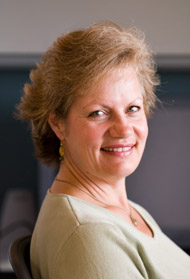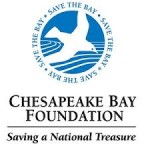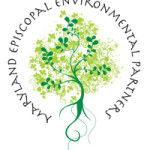Parishioner Kim: Working for the Environment, the Diocese and SMC

 Before the proceedings began the other Wednesday afternoon, I walked up to Kim Coble in the MD Senate Office Building 1st floor hearing room and said: “I just want you to know you have another friend in the audience.” She smiled and gave me a hug. (I got to know Kim in a more personal way when I took the Eucharist to her aging mother, who was unable to get to church, and her at a local nursing home.)
Before the proceedings began the other Wednesday afternoon, I walked up to Kim Coble in the MD Senate Office Building 1st floor hearing room and said: “I just want you to know you have another friend in the audience.” She smiled and gave me a hug. (I got to know Kim in a more personal way when I took the Eucharist to her aging mother, who was unable to get to church, and her at a local nursing home.)
The occasion was the 20th Annual Environmental Legislative Summit. Its sponsor was the Citizens Campaign for the Environment, an umbrella organization comprised of 33 groups and individuals. Luminaries of the state government, such as House Speaker Mike Busch and House Environmental Matters Committee Chair Maggie McIntosh were there, and spoke to an audience estimated to be 300. Kim, Vice President, Environmental Protection & Restoration at the Chesapeake Bay Foundation, was a keynoter too. She recounted 20 years of progress in conservation and restoration of our region’s resources. And, she’s been in the thick of it over those years.
She ticked off the Critical Areas legislation, Rural Legacy, oyster bed restoration efforts, sewer treatment modernization through the so-called flush fee and most recently, implementing stormwater management projects through the “rain tax.” Kim said: “The long list of bills is your success.” She went on to say that she gets paid to defend the environment while the real credit belongs to the hundreds of volunteers in the room and countless others living/working in the Chesapeake Bay watershed. She’s like that. A newspaper article about the Summit may be found here.
Kim then described a recent legal challenge to the EPA’s Chesapeake Bay Cleanup Program. Headlined as the farm lobby’s fight to halt bay cleanup, attorneys general from 21 states have joined with the American Farm Bureau Federation and The Fertilizer Institute to gut the agency’s authority to regulate wastewater in the Bay. Here’s a Washington Post piece on the fight. Basically, they’re worried that the EPA will next turn its attention to the states bordering the Mississippi River and other major U.S. watersheds.
She urged all in attendance to go to the CBF’s website to join its lawsuit compelling the EPA to initiate the cleanup plan by petitioning against the lobbying efforts to scrap it. I’ve joined.
You too can join by signing the petition, “Stand with the Chesapeake Bay!” here. Importantly, the 6 Bay states governed by Chesapeake Bay Cleanup plan originally asked the EPA to regulate their waste dumped into the Bay by imposing a pollution diet time table. (I blogged about stormwater cleanup last June- Could Be Artful.)
In the Episcopal Church, Maryland’s Bishop Sutton (wanting to be known as the “green bishop”) asked Kim to chair the newly formed Maryland Episcopal Environmental Partners (MEEP). Actually, she’s long been associated with a Diocese-wide environmental conservation vision/effort that caring for the environment is core to our spiritual vocation. But MEEP is a revamping of that effort.
MEEP’s Goals are to: “Increase the actions the diocese, congregations and individual members take to improve the health of our environment by educating, inspiring and calling on them. MEEP will provide ideas for congregational actions that engage parishioners of all ages and further our connection to God’s creation and serve as an example for the larger Episcopal and faith communities.”
MEEP’s Objectives:
- Develop education tools for congregations/members and inspire them to take actions
- As a diocese, take at least one action/year to improve the health of our environment
- Increase accountability and ensure positive direction towards meeting our goals
- Provide leadership for larger Episcopal and faith communities
Kim is a greeter at St. Margaret’s, a member of one of the coffee hour teams—and (of course) serves on the Environmental Missions committee.
I, for one, am very thankful for this parishioner’s leadership on behalf of us all who live in the regional area and benefit in many ways from the Bay.
What can you/I be doing to help restore the Bay’s health and the economy that’s an integral part of it?
